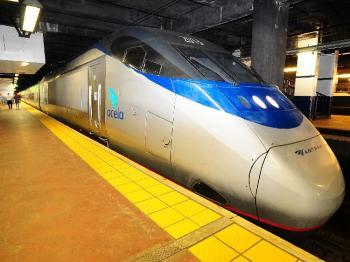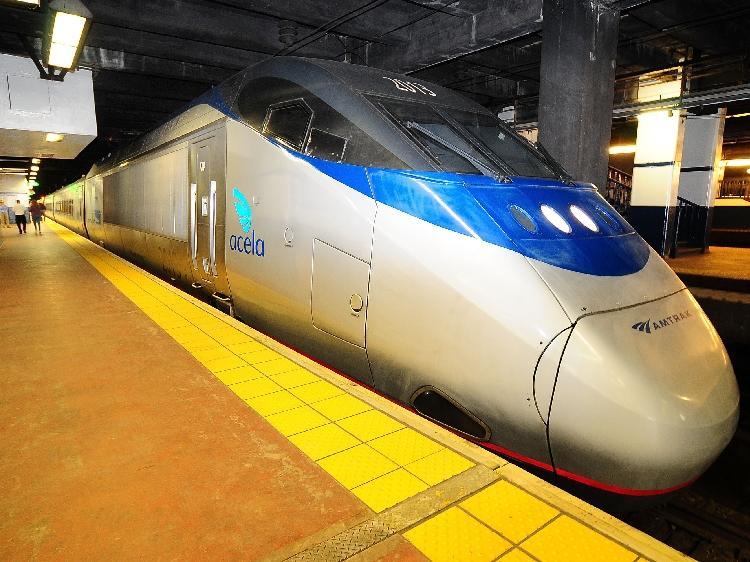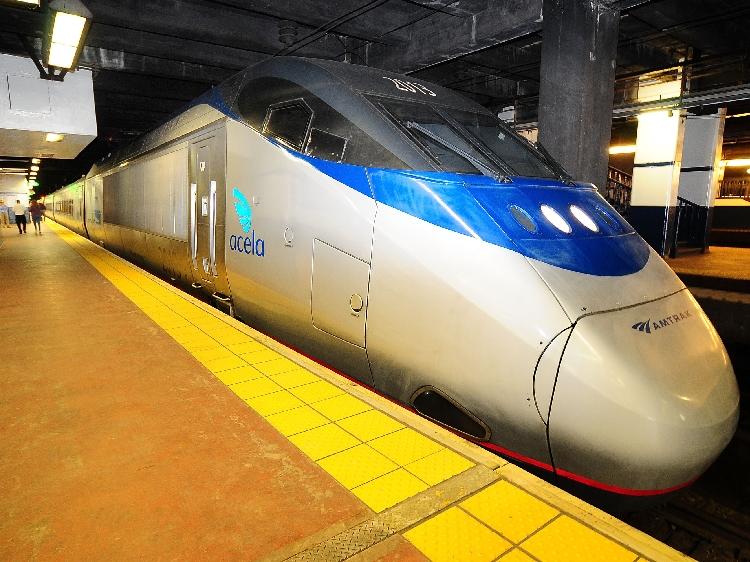Hearing Envisions High-Speed Railway for Northeast
Planned railway traveling at 220 mph could cut trip from NYC to Washington DC to 96 minutes.

ACELA EXPRESS: The proposed new high-speed railway would go much faster than the existing Acela Express, which is touted at reaching speeds of up to 150 miles per hour. Lisa Lake/Getty Images for Amtrak
|Updated:






